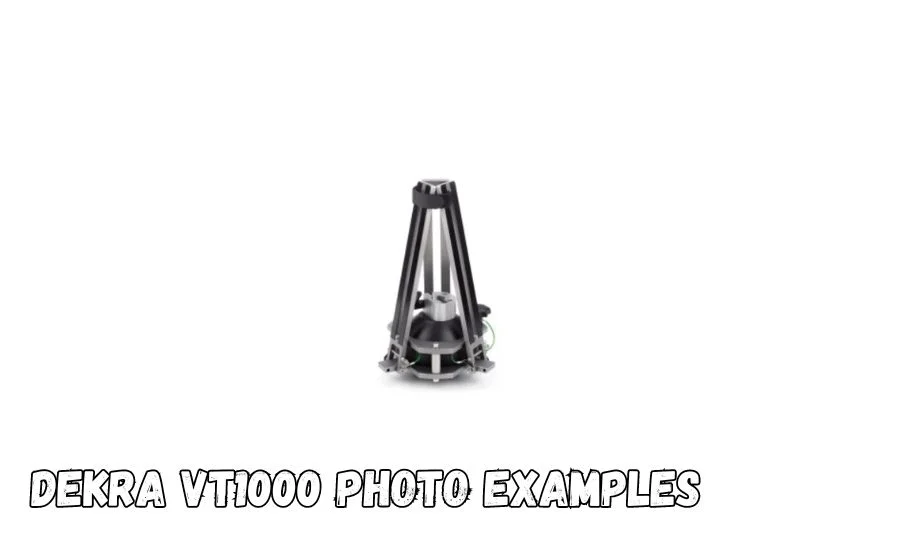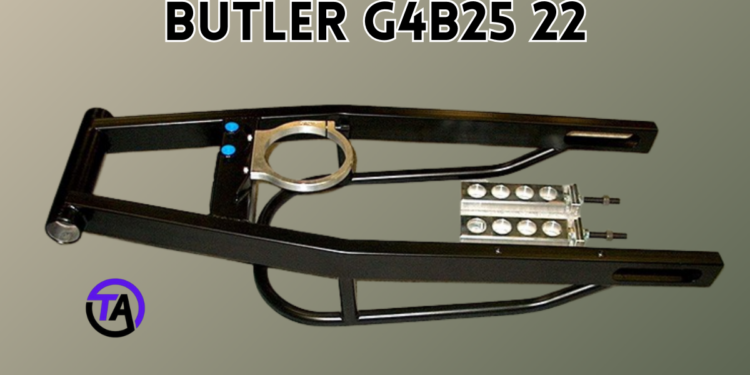
In the world of automotive maintenance and safety, understanding tire health is crucial. One aspect that often goes unnoticed is the pitting of tires, which can significantly impact vehicle performance and safety. This is where the Dekra VT1000 pitting images come into play. In this article, we will explore What You Need to Know About Dekra VT1000 Pitting Images, their implications, and what you need to know to ensure your vehicle remains safe on the road.
What is the Dekra VT1000?
The Dekra VT1000 is a specialized device used for inspecting and assessing the condition of tires. It employs advanced imaging technology to capture detailed pictures of tire surfaces, highlighting any abnormalities, including pitting. Pitting refers to the small, crater-like depressions that can form on tire surfaces due to various factors, such as wear, age, and environmental conditions. Understanding Dekra VT1000 pitting images is essential for effective tire maintenance.
The Importance of Tire Inspection
Tires are the only point of contact between a vehicle and the road. Regular inspection of tires is vital for several reasons:
- Safety: Worn or damaged tires can lead to blowouts or reduced traction, increasing the risk of accidents. Regular checks help identify issues through Dekra VT1000 pitting images.
- Performance: Healthy tires improve fuel efficiency and enhance driving comfort, as indicated by Dekra VT1000 pitting images.
- Longevity: Regular checks can help identify issues early, prolonging the life of the tires and saving money in the long run. The Dekra VT1000 pitting images aid in this process.
Understanding Pitting in Tires
What Causes Pitting?
Pitting in tires can be caused by several factors, including:
- Wear and Tear: Over time, tires naturally degrade due to regular use, which can be documented in Dekra VT1000 pitting images.
- Environmental Factors: Exposure to UV rays, ozone, and harsh weather conditions can contribute to tire deterioration, as seen in Dekra VT1000 pitting images.
- Improper Inflation: Both under-inflation and over-inflation can lead to uneven wear and pitting, observable through Dekra VT1000 pitting images.
- Road Conditions: Poor road surfaces and debris can accelerate tire wear, resulting in noticeable pitting reflected in Dekra VT1000 pitting images.
Why Pitting is a Concern
Pitting can lead to several issues, including:
- Reduced Traction: The irregular surface caused by pitting can compromise grip, especially in wet conditions, a concern highlighted in Dekra VT1000 pitting images.
- Increased Vibration: Pitted tires can create an uneven ride, resulting in vibrations that can affect vehicle control, as shown in Dekra VT1000 pitting images.
- Compromised Safety: Severe pitting can weaken the tire structure, leading to potential blowouts, underscoring the importance of monitoring Dekra VT1000 pitting images.
The Role of Dekra VT1000 Pitting Images
How the VT1000 Works
The Dekra VT1000 uses high-resolution imaging technology to capture detailed images of tire surfaces. This process includes:
- Scanning: The device scans the tire surface while the vehicle is stationary, capturing Dekra VT1000 pitting images.
- Image Capture: High-resolution images are taken, highlighting any irregularities, including pitting.
- Analysis: The images are analyzed to assess tire condition and provide recommendations based on the findings in Dekra VT1000 pitting images.
Benefits of Using Dekra VT1000
- Detailed Inspection: The high-resolution images allow for a thorough examination of tire surfaces, making it easier to identify pitting and other issues through Dekra VT1000 pitting images.
- Immediate Feedback: Users receive instant analysis, enabling quick decision-making regarding tire maintenance or replacement, supported by Dekra VT1000 pitting images.
- Comprehensive Reporting: The VT1000 can provide detailed reports that can be valuable for fleet management or individual vehicle maintenance, highlighting key insights from Dekra VT1000 pitting images.
Interpreting Dekra VT1000 Pitting Images
What to Look For
When examining Dekra VT1000 pitting images, consider the following:
- Depth of Pitting: Deeper pits can indicate more significant wear and require immediate attention, as shown in Dekra VT1000 pitting images.
- Distribution: Check if pitting is uniform across the tire or concentrated in specific areas, a detail that can be easily analyzed with Dekra VT1000 pitting images.
- Surface Condition: Look for other signs of deterioration, such as cracking or bulging, in conjunction with the insights from Dekra VT1000 pitting images.
Taking Action Based on the Images
After analyzing the Dekra VT1000 pitting images, consider the following actions:
- Routine Maintenance: If minor pitting is detected, regular maintenance and tire rotation may suffice, based on insights from Dekra VT1000 pitting images.
- Professional Inspection: If severe pitting is noted, seek professional assistance for a comprehensive assessment, guided by the findings in Dekra VT1000 pitting images.
- Replacement: In cases of extensive pitting or other significant wear indicators, replacing the tires may be necessary for safety, as highlighted in Dekra VT1000 pitting images.
Best Practices for Tire Maintenance
To prevent pitting and ensure the longevity of your tires, consider these best practices:
- Regular Inspections: Conduct routine tire inspections, ideally every month, to catch issues early, using Dekra VT1000 pitting images as a key tool.
- Proper Inflation: Maintain recommended tire pressure to avoid uneven wear, which can be tracked through Dekra VT1000 pitting images.
- Rotate Tires: Regularly rotate your tires according to manufacturer recommendations to promote even wear, guided by observations from Dekra VT1000 pitting images.
- Alignment Checks: Ensure that your vehicle’s alignment is correct to prevent uneven tire wear, as identified in Dekra VT1000 pitting images.
- Driving Habits: Avoid aggressive driving, which can increase tire wear and the likelihood of pitting, with insights from Dekra VT1000 pitting images serving as a reminder.
The Technological Advantage of the Dekra VT1000
Advanced Imaging Technology
The Dekra VT1000 stands out due to its advanced imaging technology. This device utilizes sophisticated sensors and imaging algorithms to produce high-resolution images that can detect even minor defects in tire surfaces. The Dekra VT1000 pitting images produced are not just for visual assessment; they provide quantitative data that can be used to track the wear patterns over time. This data is invaluable for fleet managers and individual vehicle owners alike.
Integration with Software Solutions
In many modern vehicle service environments, the Dekra VT1000 is integrated with software that allows for comprehensive data analysis. This integration can:
- Store Historical Data: Keep a record of past inspections, allowing users to compare current Dekra VT1000 pitting images with previous assessments to determine trends in tire wear.
- Generate Reports: Automatically generate reports that summarize the condition of tires, which can be crucial for vehicle maintenance records or audits.
- Alert Systems: Set up alerts for when tires fall below a certain health threshold based on the analysis of Dekra VT1000 pitting images.
Real-World Applications of Dekra VT1000 Pitting Images
Fleet Management
For companies that operate fleets of vehicles, the importance of maintaining tire health cannot be overstated. Utilizing Dekra VT1000 pitting images can help fleet managers make informed decisions about tire replacement and maintenance schedules. By regularly inspecting tires with the Dekra VT1000, managers can:
- Reduce Downtime: Identify and address tire issues before they lead to breakdowns, keeping vehicles on the road longer.
- Cut Costs: Optimize tire usage and replacement schedules, saving money on both tires and fuel.
- Enhance Safety: Ensure that all vehicles are operating with safe, well-maintained tires, reducing the risk of accidents.
Personal Vehicle Maintenance
Even for individual vehicle owners, Dekra VT1000 pitting images offer significant benefits. Regular use of the VT1000 for personal vehicles can lead to:
- Informed Decisions: Owners can make better decisions about when to replace tires based on visual and quantitative data from Dekra VT1000 pitting images.
- Improved Safety: Regular checks can help prevent accidents caused by tire failures, enhancing overall road safety.
- Increased Longevity: By addressing issues early, vehicle owners can extend the life of their tires, saving money in the long run.
Understanding the Limitations of Dekra VT1000 Pitting Images
Not a Comprehensive Solution
While Dekra VT1000 pitting images provide valuable insights into tire health, they are not a comprehensive solution. They should be part of a broader vehicle maintenance strategy that includes:
- Visual Inspections: Regularly visually inspecting tires for other signs of damage, such as sidewall cracks or foreign objects lodged in the tread.
- Professional Evaluations: Periodically having tires evaluated by a professional mechanic who can assess aspects that the VT1000 may not cover, such as internal tire integrity.
- Maintaining Other Components: Ensuring that other vehicle systems, such as brakes and suspension, are also regularly inspected, as these can impact tire wear.
Technological Dependence
The effectiveness of Dekra VT1000 pitting images relies on the device being used correctly and maintained properly. Users must be trained to operate the device and interpret the images accurately. Additionally, the technology is only as good as its calibration and upkeep. Regular updates and maintenance of the VT1000 are essential to ensure the accuracy of the pitting images captured.
Conclusion
Understanding Dekra VT1000 pitting images is crucial for maintaining tire health and ensuring vehicle safety. By regularly inspecting your tires and being aware of the signs of pitting, you can take proactive steps to address issues before they become serious problems. The Dekra VT1000 serves as an invaluable tool in this process, offering detailed insights into tire conditions that can significantly impact performance and safety.
Incorporating regular tire inspections into your vehicle maintenance routine can save you time, money, and potentially prevent accidents on the road. By staying informed and vigilant about tire health through Dekra VT1000 pitting images, you can ensure a safer and more enjoyable driving experience.







